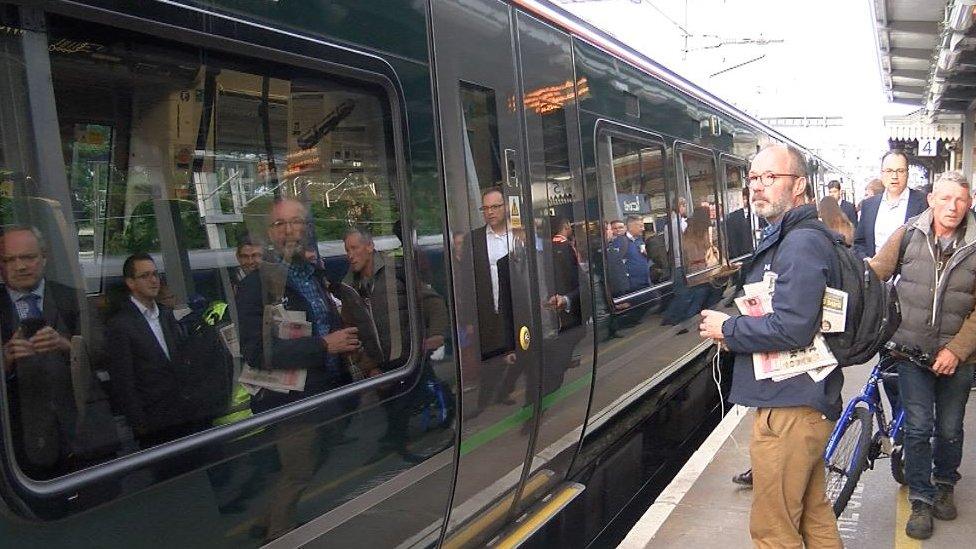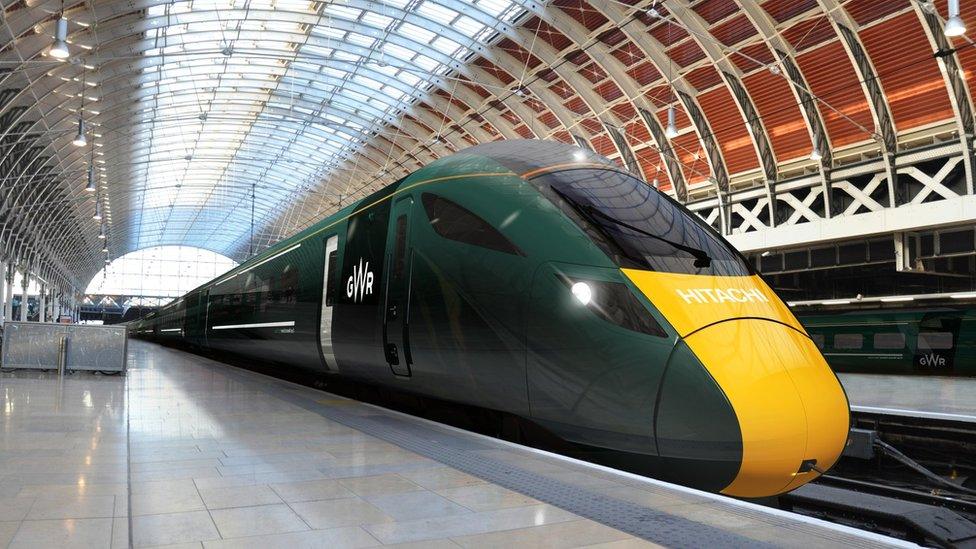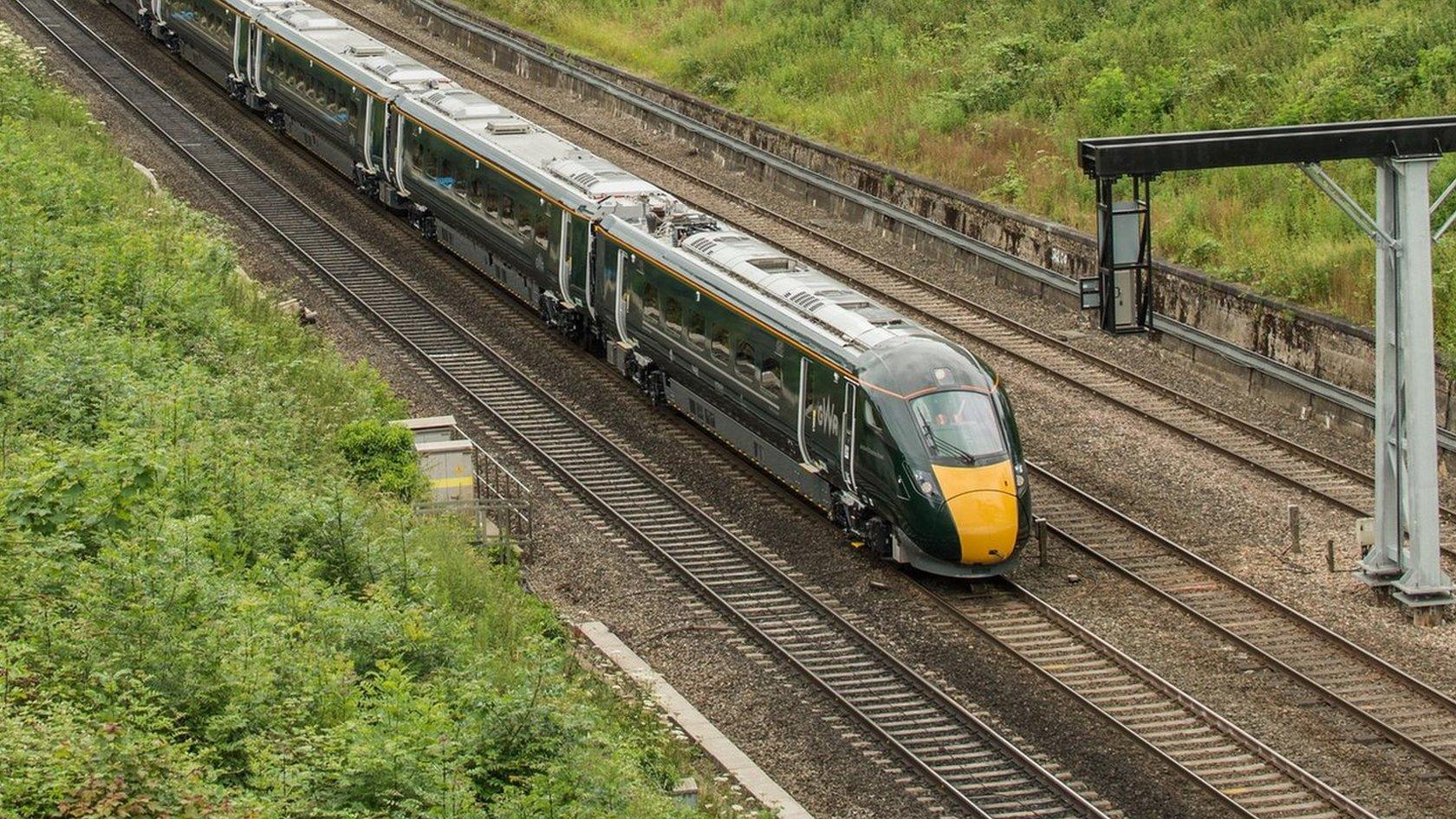Great Western electrification: London and Maidenhead link completed
- Published
The full electrification project is due to be finished by 2018
Passenger trains powered by electricity from overhead lines have started running in Berkshire.
Eight Great Western Railway trains travelling between London Paddington and Maidenhead are now powered this way, rather than by diesel.
The £2.8bn scheme linking London and Cardiff has been plagued with problems, including delays and spiralling costs.
By autumn it is hoped electrification will increase capacity by 40% for passengers on the Thames Valley route.
The first two eight-carriage Electrostar trains were introduced in September and provided an additional 1,400 seats between Hayes and Harlington and London Paddington.
The new British-built Class 387 Bombardier electric trains will run using the overhead electric lines between Paddington and Maidenhead.

Great Western Railway said it was embarking on "the biggest fleet upgrade in a generation"
Electrostar trains will gradually replace the diesel Turbo trains currently in use in the Thames Valley region.
They are expected to run between Paddington and Didcot from January.
The electrification of the Great Western line is significantly behind schedule.
Network Rail, which is implementing the project, and the Department for Transport have been criticised by MPs for not being able to provide a schedule of when work on the line will be finished.
The plan was to electrify the route fully from Cardiff to London by 2018.
Electrification of some routes has been "deferred", affecting Didcot, Henley and Oxford and Bristol Temple Meads.
Costs have also increased, with the current budget three times higher than the original estimate of £874m in 2013.
- Published8 November 2016

- Published3 March 2017
